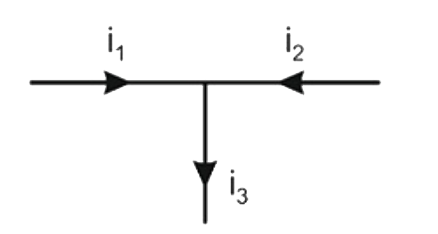Out of given four waves (1),(2),(3) and (4)
y=asin(kx+ωt) .(1)
y=asin(ωt−kx) ..(2)
y=acos(kx+ωt) ..(3)
y=acos(ωt−kx) .(4)
emitted by four different source S1,S2,S3 and S4 respectively, interference phenomena would be observed in space under appropriate conditions when
(a)source S1 emits wave (1) and S4 emits wave (2)
(b)source S3 emits wave (3) and S4 emits wave (4)
(c)source S2 emits wave (2) and S4 emits wave (4)
(d)S4 smits waves (4) and S3 emits waves (3)
The correct Answer is:C
To solve the problem regarding the interference of the given waves, we need to analyze the equations of the waves and determine the conditions under which interference occurs. Here’s a step-by-step breakdown of the solution:
Step 1: Identify the Wave Equations
The four waves given are:
1. y=asin(kx+ωt) (Wave 1)
2. y=asin(ωt−kx) (Wave 2)
3. y=acos(kx+ωt) (Wave 3)
4. y=acos(ωt−kx) (Wave 4)
Step 2: Understand the Condition for Interference
For interference to occur between two waves, they must have a constant phase relationship. This means that the difference in their phase should be constant over time.
Step 3: Analyze the Phase Relationships
- Wave 1 and Wave 3:
- Wave 1: sin(kx+ωt)
- Wave 3: cos(kx+ωt)
We can express Wave 3 in terms of sine:
cos(kx+ωt)=sin(kx+ωt+π2)
This indicates a phase difference of π2 (90 degrees).
- Wave 2 and Wave 4:
- Wave 2: sin(ωt−kx)
- Wave 4: cos(ωt−kx)
Similarly, we can express Wave 4 in terms of sine:
cos(ωt−kx)=sin(ωt−kx+π2)
This also indicates a phase difference of π2.
Step 4: Determine Which Waves Can Interfere
From the analysis:
- Waves 1 and 3 can interfere due to their phase difference of π2.
- Waves 2 and 4 can also interfere due to their phase difference of π2.
Step 5: Identify the Sources
- Wave 1 is emitted by source S1.
- Wave 2 is emitted by source S2.
- Wave 3 is emitted by source S3.
- Wave 4 is emitted by source S4.
Conclusion
The pairs of waves that can interfere are:
- S1 (Wave 1) and S3 (Wave 3)
- S2 (Wave 2) and S4 (Wave 4)
Thus, the correct answer is that interference phenomena would be observed when:
- S2 emits Wave 2 and S4 emits Wave 4.
Final Answer
The correct option is C.
---
The four waves given are:
1. y=asin(kx+ωt) (Wave 1)
2. y=asin(ωt−kx) (Wave 2)
3. y=acos(kx+ωt) (Wave 3)
4. y=acos(ωt−kx) (Wave 4)
For interference to occur between two waves, they must have a constant phase relationship. This means that the difference in their phase should be constant over time.
- Wave 1 and Wave 3:
- Wave 1: sin(kx+ωt)
- Wave 3: cos(kx+ωt)
We can express Wave 3 in terms of sine:
cos(kx+ωt)=sin(kx+ωt+π2)
This indicates a phase difference of π2 (90 degrees).
- Wave 2: sin(ωt−kx)
- Wave 4: cos(ωt−kx)
Similarly, we can express Wave 4 in terms of sine:
cos(ωt−kx)=sin(ωt−kx+π2)
This also indicates a phase difference of π2.
From the analysis:
- Waves 1 and 3 can interfere due to their phase difference of π2.
- Waves 2 and 4 can also interfere due to their phase difference of π2.
- Wave 1 is emitted by source S1.
- Wave 2 is emitted by source S2.
- Wave 3 is emitted by source S3.
- Wave 4 is emitted by source S4.
The pairs of waves that can interfere are:
- S1 (Wave 1) and S3 (Wave 3)
- S2 (Wave 2) and S4 (Wave 4)
- S2 emits Wave 2 and S4 emits Wave 4.
The correct option is C.
Topper's Solved these Questions
- SUPERPOSITION AND STANDING WAVESBOOK - CENGAGE PHYSICS ENGLISHCHAPTER - SUPERPOSITION AND STANDING WAVESEXERCISE - Multiple Correct Answers Type
5 Videos
- SUPERPOSITION AND STANDING WAVESBOOK - CENGAGE PHYSICS ENGLISHCHAPTER - SUPERPOSITION AND STANDING WAVESEXERCISE - Fill in the Blanks Type
34 Videos
- SUPERPOSITION AND STANDING WAVESBOOK - CENGAGE PHYSICS ENGLISHCHAPTER - SUPERPOSITION AND STANDING WAVESEXERCISE - Integer
9 Videos
- SOUND WAVES AND DOPPLER EFFECTBOOK - CENGAGE PHYSICS ENGLISHCHAPTER - SOUND WAVES AND DOPPLER EFFECTEXERCISE - Integer
16 Videos
- THERMODYNAMICSBOOK - CENGAGE PHYSICS ENGLISHCHAPTER - THERMODYNAMICSEXERCISE - 24
1 Videos
Similar Questions
Knowledge Check
Two waves are represented by the equations
y1=asin(ωt+kx+0.57)m and
y2=acos(ωt+kx)m,
where x is in metres and t is in seconds. The phase difference between them isA1.0 radianB1.25 radianC1.57 radianD0.57 radian
Two waves are given by y1=asin(ωt−kx) and y2=acos(ωt−kx). The phase difference between the two waves is -
View SolutionTwo waves of equation
y1=acos(ωt+kx)andy2=acos(ωt−kx) are superimposed upon each other. They will produce
View SolutionFor simple harmonic vibrations
y1=8cosωt
y2=4cos(ωt+π2)
y3=2cos(ωt+π)
y4=cos(ωt+3π2) are superimposed on one another. The resulting amplitude and phase are respectively
View SolutionFour light waves are represented by
i.y=a1sinωt
ii. y=a2sin(ωt+ε)
iii. y=a1sin2ωt
iv.y=a2sin2(ωt+ε) Inteference fringes may be observed due to superposition of
View SolutionTwo waves represented by y=asin(ωt−kx) and y=acos(ωt−kx) are superposed. The resultant wave will have an amplitude.
View SolutionTwo waves are given as y1=3Acos(ωt−kx) and y2=Acos(3ωt−3kx) . Amplitude of resultant wave will be ____
View SolutionWhich two of the given transverse waves will give stationary wave when get superimposed?
z1=acos(kx−ωt) (A)
z2=acos(kx+ωt) (B)
z3=acos(ky−ωt) (C)
View Solution

